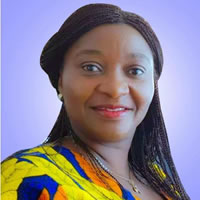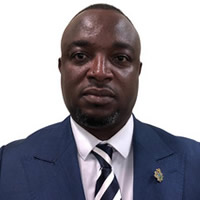The Central region is considered the hub and the home of some of the finest and oldest secondary schools in Ghana. In addition, the region was the first to have contacts with Europeans and with western education. There is therefore a perception in Ghana that literacy levels in Central region are high.
Literacy
78.2 percent of the population of Central Region are literate and 21.8 percent are not literate. This is higher than the national average of 74.1 percent, but falls below the rates of three other Regions- Greater Accra (89.3%), Ashanti (82.6%) and Eastern Region (81.0%). Although the regional capital has the concentration of the best secondary schools in Ghana, most of the enrolled students came from outside the Region. At the District level, there are marked variations in literacy levels. The highest literacy rates in the Region are recorded at Cape Coast Metropolis (89.7%) and Agona West Municipal (83.4%). Higher proportions of 80 percent or higher are recorded in Gomoa East (81.5%), Ewutu Senya (81.0%), Upper Denkyira (81.0%), Effutu Municipal (80.7%) and AssinNorth Municipal (80.0%).
The lowest literacy rates are recorded in Gomoa West (66.6%) and Abura-Asebu-Kwa mankesais 70.8%. As expected, literacy levels are higher in urban than in rural localities for all Districts. Urban dwellers comparatively, place higher values on education than rural dwellersbut the real and opportunity costs of education are also relatively higher in rural communities. The proportion literate in urban localities is 82.0 percent compared with 74.6 percent in rural localities. Urban literacy rates are higher than rural literacy in all Districts except the following two districts where rural rates are higher: Abura-Asebu-Kwamankese (74.6% rural, 63.3% urban) and Gomoa West (68.0% rural, 64.9% urban). This may to some extent be explained by high levels of literacy in Ghanaian languages in rural areas.Population 11 years and older by language
literacy district and sex
About one-half (48.8%) of the population 11 years and older are literate in English and a Ghanaian language while about one-fifth (21.8%) are literate in English language only. About six percent (6.3%) are literate in a Ghanaian language only. The proportions of persons who are literate in English only are highest in Ewutu Senya (39.8%), and Gomoa East (30.1%). The two Districts are now within commuting distance from Accra and is the home for many literate persons who work in Accra. In contrast, the proportions literate in English only are 13.1% in in Upper Denkyira East, 14.7% in Asikuma-Odoben-Brakwa and 14.8% in Abura-Asebu-Kwamankese.
The proportion literate in English and a Ghanaian language is lower than two-thirds in all districts. It is higher than 50 percent in eight of seventeen Districts and is highest in Cape Coast (60.3%). In Ewutu Senya, only 36.2 percent are literate in English and a Ghanaian language.
The following three Districts have the highest proportion of persons literate in Ghanaian language(s) only: Upper Denkyira West (13.3%), Upper Denkyira East (9.1%) and Ajumako-Enyan-Essiam (9.0%). The lowest literacy rate in Ghanaian Languages only is in Effutu (3.1%) Ewutu Senya (3.6%). In all districts, less than one percent is literate in English and French except Cape Coast Metropolis (3.5%) and Effutu (2.4%).
There are sex differentials in proportions literate. While only about 14 percent males are not literate in any language, the proportion for females is 28.9 percent. Fifty six percent of males compared with 42.1 percent females are literate in English and a Ghanaian language with high disparities observed across Districts. In nearly all the Districts the proportion of females not literate is about twice that of males. Gomoa West (42.4%) and Abura-Asebu-Kwamankese (37.5%) are the District with the lowest proportion of females not literate.
School Attendance
This section provides information on school attendance of the population three years and older. 19.1 percent of the population have never attended any formal school in their lifetime while 43.1 percent are attending school now and 37.7 percent have attended in the past. A higher proportion of females (24.7%) than males (12.9%) have never attended school.
Gomoa West (28.6%) has the highest proportion of the population who have never attended school, followed by Abura-Asebu-Kwamankese (25.5%), Komenda/Edina/Eguafo (22.6%) andMfantsiman Municipal (22.3%). Cape Coast Metropolitan has the lowest proportion of the population who have never attended school as the hub of educational centre of Ghana. The proportion of females who have never attended school ranks high compared to males in all the Districts. A higher proportion of the population in the rural (22.5%) areas have never attended school compared to those in the urban (16.2%) areas; this pattern pertains in all the Districts.
Generally, about four in ten of the population in the Central Region are currently attending school while 37.7 percent have attended school in the past. Cape Coast Metropolitan and Effutu Municipal have more than half of their population attending school currently. Cape Coast Metropolis (49.3%) and Effutu Municipal (47.2%) recorded the highest proportions of the population currently in school while Gomoa West (40.9%) and Ewutu Senya (40.6%) recorded the lowest. In all the districts, The proportion of males currently attending school is higher than that of females higher than those in urban (16.2%) areas.
Current School Attendance
Information on the population who are currently attending school indicate that over eight in ten of the population currently attending school are in basic schools comprising nursery (6.7%), kindergarten (16.0%), primary (45.4%) and JHS (17.8%). The proportion currently pursuing a Bachelor Degree is 3.8 percent and 0.2 percent are at the post graduate level. Asikuma-Odoben-Brakwa (51.9%) has the highest proportion of the population currently attending primary school in the Central Region followed by Agona East (50.6%), Upper Denkyira West (49.8%) andGomoa West (49.1%), with Cape Coast Metropolis (27.0%) recording the lowest primary school atteendance. About one-quarter of the population currently attending school in Cape Coast Metropolis and Effutu Municipal are in a Bachelor Degree Programme. The high proportions of the population currently attending Bachelor Degree Programme may be due to the location of the University of Cape Coast and the University of Education in Cape Coast Metropolis and Effutu Municipal respectively. Furthermore, the Cape Coast Polytechnic also offers Bachelor Degree programmes.
Past School Attendance
The highest levels of school attained by those who have ever been to school are JSS/JHS (32.9%) and Middle School (26.0%). In addition, 18.9% of the population of the Central Region has attained primary school level of education. At the Districts level, JSS/JHS is the highest level of education attained by persons in Upper Denkyira West (38.1%) and Twifo-Hemang-Lower Denkyira (37.8%). The proportions that have attained JSS/JHS level education only are lower in Cape Coast Metropolis (23.9%) and Effutu Municipal (27.3%). Furthermore, in Cape Coast Metropolis, 13.8 percent have attained tertiary (post secondary diploma, bachelors degree and post graduate) education while in Upper Denkyira, less than two percent have attained tertiary education.
Level of Education (Persons Three years and Older)
At the regional level, about one in five (19.1%) have never attended school. Slightly more than one-quarter (26.7%) have attended up to primary level, and a further 21% up to JSS/JHS level. About ten percent of the population three years and older (9.8%) are either in nursery (2.9%) or kindergarten (6.9%).
There are also substantial differences between males and females regarding levels of education. The proportion of females who have never attended school (24.7%) is almost twice that of males (12.9%). The disparities between males and females in proportions that have never attended school hold true in urban (11.0% males and 20.7% females) and rural localities (14% males, 28.5% females). As observed in earlier sections, levels of education among persons in urban areas are higher than rural areas, even among the same sex. Twenty one percent of females have never attended school in urban localities; compared with 28.5 percent in rural localities.
The disparity between males and females who have never been to school, which is wide at the higher educational levels disappearing gradually as one moves to the lower levels and is almost the same from JSS (21.6% males and 20.4% females), to Primary school level (26.8% males and 26.6% females). This is illustrative of a situation of increasing schooling attendance of females. This implies that the increasing investment in female education in paying dividend and more needs to be done to address the many obstacles which militate against female education particularly at post JSS levels. For instance in the rural areas, girls (28.0%) and boys (28.7%) at the Primary School level and girls (20.1%) and boys (22.5%) at the JHS level butthe differential widens from SHS/SSS. This point to increasing barriers to female education after the JHS.
Date Created : 10/6/2023 12:00:00 AM





 facebook
facebook twitter
twitter Youtube
Youtube TOLL FREE 0800 430 430
TOLL FREE 0800 430 430 +233 593 831 280
+233 593 831 280 GPS: GE-231-4383
GPS: GE-231-4383 info@ghanadistricts.com
info@ghanadistricts.com Box GP1044, Accra, Ghana
Box GP1044, Accra, Ghana